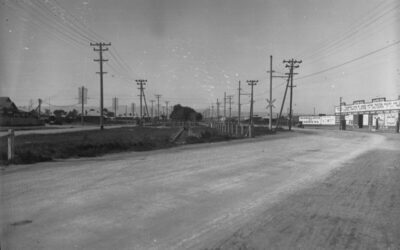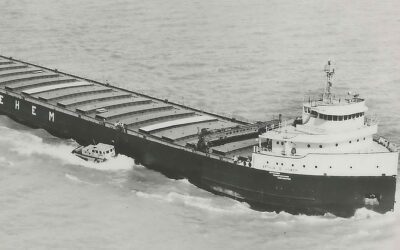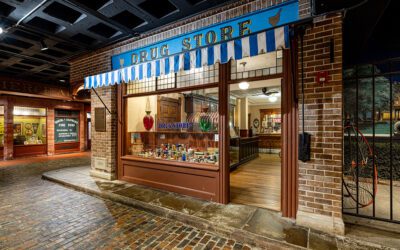
The SS Edmund Fitzgerald, pictured in 1971. (Photo via Wikimedia Commons, CC BY-SA 3.0)
It was 48 years ago this week that the biggest ship to sink in America’s Great Lakes made its final voyage, leaving 29 souls deep under Lake Superior.
The truth behind what happened to the SS Edmund Fitzgerald on that November night remains one of the biggest mysteries in Great Lakes lore, with many studies and theories trying to piece it together. But there are certain things we do know. Today, we’re diving into the story of the sinking of the SS Edmund Fitzgerald.
A vessel of industry
Michigan is known as being a state of industry. Most notably, the Mitten has a reputation for building many of the nation’s cars. And all of that production requires raw materials, like steel. That’s where the SS Edmund Fitzgerald came in. The ship was what’s known as a freighter—a boat built for transporting large amounts of cargo between destinations.
Interestingly, the ship’s origins trace back to an insurance company.
In the 1950s, Northwestern Mutual Life Insurance Company, based out of Milwaukee, Wisconsin, had been heavily investing in the iron industry. So, in 1957, the company reached out to Great Lakes Engineering Works—a ship-building company based out of River Rouge, Michigan, to construct a boat that could transport goods across the soon-to-be-finished Saint Lawrence Seaway. The seaway would allow ships to travel from the Atlantic Ocean to the Great Lakes.
After a year of construction, the ship launched on June 7, 1958 with the president of Northwestern Mutual Life Insurance Company as its namesake—the SS Edmund Fitzgerald.
Northwestern Mutual signed a 25-year contract with Oglebay Norton Corporation to operate the ship, and for nearly two decades, the Edmund Fitzgerald would carry a raw material called taconite from mines in Minnesota to iron works in Detroit and other cities along the Great Lakes. Oglebay Norton considered the Edmund Fitzgerald the flagship of its Columbia Transportation, and it would often set—and break—its own records for how much cargo it carried between trips.
By the end of 1975, the ship had made nearly 750 trips around the Great Lakes. It was affectionally known by several nicknames, including “Fitz,” “Pride of the American Side,” and the “Titanic of the Great Lakes.”
Unfortunately, that last moniker would prove to be all too accurate.
The final voyage

A lifeboat from the SS Edmund Fitzgerald on display in Sault Ste. Marie. (Source: Wikimedia Commons)
On Nov. 9, 1975, the SS Edmund Fitzgerald, under the command of Captain Ernest M. McSorley, departed from Superior, Wisconsin to transport cargo to Zug Island, near Detroit.
That afternoon, Edmund Fitzgerald was joined on its trip by another ship, the SS Arthur M. Anderson, captained by Jesse B. Cooper.
The journey didn’t seem out of the ordinary; the ship had done it hundreds of times. The weather that day wasn’t unusual by any means, either, although the National Weather Service predicted that a storm would hit south of Lake Superior early the next morning.
Meanwhile, Captain Dudley J. Paquette of a third boat—the Wilfred Sykes—picked up radio chatter between the captains of the Edmund Fitzgerald and the Arthur M. Anderson. The two were discussing the worsening conditions.
Through the night, weather conditions began to deteriorate, and at 2 a.m. on Nov. 10, the National Weather Service updated its warning to a storm for all of Lake Superior. By the afternoon, the crew of the Edmund Fitzgerald was facing strong winds and a lack of visibility due to snow.
At 2:45 p.m., the Arthur M. Anderson lost sight of Edmund Fitzgerald, which at this point was about 16 miles ahead. Less than an hour later, Captain McSorley radioed Arthur M. Anderson to let the ship know that they were taking on water and had developed a list—a potentially catastrophic leaning.
At 4:10 p.m., McSorley again radioed Arthur M. Anderson to advise that they had lost the use of their radar and were effectively blind. McSorley slowed down so that the Arthur M. Anderson could catch up.
Around that time, the United States Coast Guard sent out a broadcast warning that the Soo Locks had been closed and advised ships to look for a safe place to anchor.
Arthur M. Anderson continued trying to guide Edmund Fitzgerald toward Whitefish Bay. McSorley tried to make contact with nearby ships to get info about nearby navigational beacons, making contact with Captain Cedric Woodard of the ship Avafors around 5 p.m.
McSorley told Woodard: “I have a ‘bad list,’ I have lost both radars and am taking heavy seas over the deck in one of the worst seas I have ever been in.”
At 7:10 p.m., Arthur M. Anderson again made contact with the Edmund Fitzgerald to check on its status. McSorley told Arthur M. Anderson, “We are holding our own.” That would be the last time contact would be made with the Edmund Fitzgerald.
After several failed attempts at contact, Captain Cooper of the Arthur M. Anderson started trying to see if a nearby ship was able to pick up the Edmund Fitzgerald on its radar. It could not.
Around 9 p.m. that night, Cooper reported the Edmund Fitzgerald missing to the USCG. Despite the storm, the USCG asked Arthur M. Anderson to begin a search for any survivors.
Over the span of three days, Arthur M. Anderson was joined by several other ships—and even aircraft—in the search for the Edmund Fitzgerald.
And then, searchers found an oil slick presumably belonging to the ship. Nearby, they recovered debris and even lifeboats and lifejackets—but not one of the 29 men on the Edmund Fitzgerald was ever found.

The location of the Edmund Fitzgerald’s wreck on Lake Superior. (Source: Google Maps)
An enduring mystery

A memorial to the Edmund Fitzgerald at Whitefish Point. (Source: Wikimedia Commons, CC BY-SA 4.0)
It’s long been known that Lake Superior can be a dangerous place for those who travel on it, especially during bad weather. In fact, there are about 550 shipwrecks at the bottom of the lake.
But the story of the Edmund Fitzgerald endures because of the mystery behind its sinking. How did the ship lose contact so quickly after the captain indicated they were still doing fine?
Several theories exist, including cargo overloading, sudden mechanical failure, and rogue waves. When the freighter’s wreck was finally found, it was split into two.
The sinking was instrumental in bringing about several reforms to shipping practices in the Great Lakes, including mandatory survival suits and other equipment aboard ships.
The incident was immortalized thanks to folk musician Gordon Lightfoot, who released his song, “The Wreck of the Edmund Fitzgerald,” in 1976 (listen to it here). Although the song features several factual inaccuracies, one line still holds true to this day: “The lake, it is said, never gives up her dead when the skies of November turn gloomy.”
Multiple memorials for the Edmund Fitzgerald exist across cities around the Great Lakes. In the Upper Peninsula’s Whitefish Point, where the Great Lakes Shipwreck Museum is located, there is a memorial to those lost in the tragedy. And every November in Detroit, Mariners’ Church rings its bells in honor of those whose lives were lost to the Great Lakes. In May of 2023, the church rang its bell one extra time—in honor of Lightfoot, who died on May 1.

7 creepy facts about Michigan they don’t teach you in school
Immerse yourself in the spirit of the season with seven creepy (or simply unexplained) facts about Michigan that textbooks ignore. Disappearing...

That one time in Michigan: When an official funeral was held for frozen pizzas
The next time you’re forced to discard a recalled product, draw inspiration from one of Michigan’s most inventive pizza producers. We’ve all...
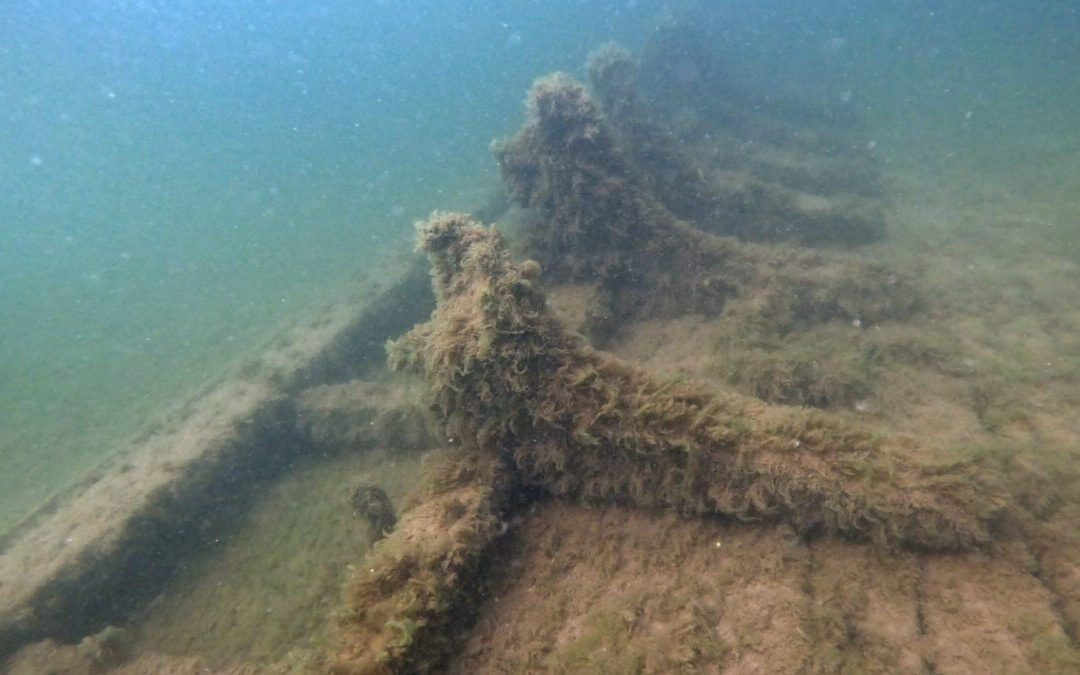
Great Lakes features mystery triangle blamed for disappearances. Is the legend true?
Beware when heading out onto Lake Michigan—legend says ships are known to vanish in what's known as the Lake Michigan Triangle, or do they? The area...
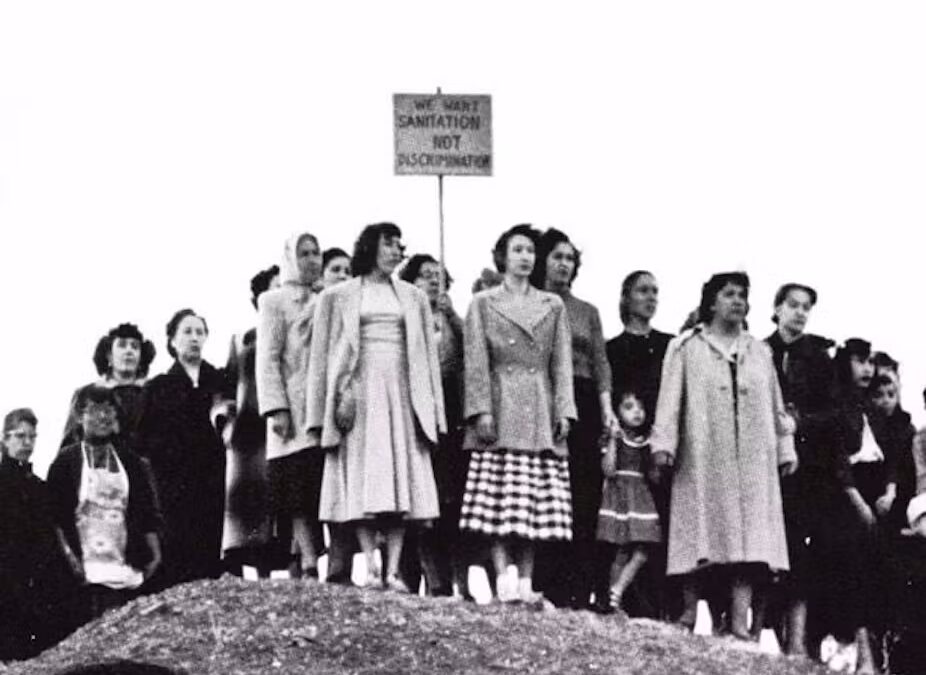
5 unsung films that dramatize America’s rich labor history
By Peter Dreier, Occidental College The U.S. is in the midst of a new upsurge of union organizing. Is a Hollywood drama about angry Starbucks...

St. Clair: The storybook Michigan town with a surprising world record
St. Clair, Michigan, not only exudes charm and offers plenty of adventures, but it also boasts an impressive world record. As a lifelong resident...


